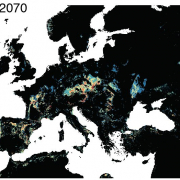Moi’s paper on adaptation to climate change on bioRxiv
Genomic basis and evolutionary potential for extreme drought adaptation in Arabidopsis thaliana
On the potential of Arabidopsis to adapt in situ to #climatechange (with many helpers)
Expósito Alonso, M., Vasseur, F., Ding, W., Wang, G., Burbano, H. A., Weigel, D.
Because earth is currently experiencing unprecedented climate change, it is important to predict how species will respond to it. However, geographically-explicit predictive studies frequently ignore that species are comprised of genetically diverse individuals that can vary in their degree of adaptation to extreme local environments; properties that will determine the species ability to withstand climate change. Because an increase in extreme drought events is expected to challenge plant communities with global warming, we carried out a greenhouse experiment to investigate which genetic variants predict surviving an extreme drought event and how those variants are distributed across Eurasian Arabidopsis thaliana individuals. Genetic variants conferring higher drought survival showed signatures of polygenic adaptation, and were more frequently found in Mediterranean and Scandinavian regions. Using geoenvironmental models, we predicted that Central European populations might lag behind in adaptation by the end of the 21st century. Further analyses showed that a population decline could nevertheless be compensated by natural selection acting efficiently over standing variation or by migration of adapted individuals from populations at the margins of the species distribution. These findings highlight the importance of within-species genetic heterogeneity in facilitating an evolutionary response to a changing climate.



